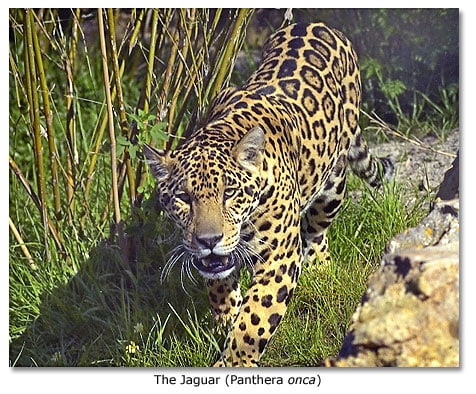As I practiced the Vajrayogini sadhana in front of the sunlit shrine next to the porch, graceful deer bounded through the woods outside, finding a refuge from their fear in this peaceful place. I felt graced by their trust and gentle presence, sharing this mountain slope like the Deer Park at Sarnath where Lord Buddha first turned the Wheel of Dharma. It seemed like Milarepa — the Kagyu bard, yogi, and friend to all wild creatures — smiled down upon us, bestowing a lineage blessing.
Milarepa said: In all my walking, sleeping, eating, and moving through this world may I not cause harm to any living being. That injunction sounds so basic, and yet it is incredibly difficult to achieve.
We human beings can be so clumsy, careless, and downright “rude and crude,” as my mother used to berate us as kids. How many times has a moth or fly been incinerated in the candle flames on my shrine during solitary meditation retreats? Even during a saving of life practice I have inadvertently killed a few of the tiny red worms I ransomed from a bait shop. Then there was the rat that drowned in my blackened soapy dishwater on that same Sugarloaf retreat 30 years ago.
During a retreat on Sonoma Mountain 18 years later I snatched a mouse from the jaws of my tabby cat Shiwa. It looked quite dead, so I laid the poor creature on my puja table and began reciting the Sukhavati prayers. The chanting must have revived the mouse as it suddenly regained consciousness and bolted beyond reach of both Shiwa and myself. Several weeks later at the end of my retreat I lifted up the mattress to air it out and discovered a flattened mouse corpse pinned to it. My cat didn’t kill that mouse. I did. It must have fled beneath the mattress where I crushed it to death when I lay down that night.
Our human species has become so disconnected from the natural world that we often crash blindly through life like proverbial bulls in a China shop. We have invented a myriad of technologies and gadgetry to entertain ourselves and adorn our deluded sense of superiority and mistaken separation from the rest of life. In our quest to conquer the physical world we have isolated ourselves from our fellow creatures and nature. It has been a lonely and terrible price to pay for our collective arrogance and hubris.
Now the human species stands at the precipice of our greatest challenge: Can we reverse the destruction we have wrought to our planet’s life-support systems and its glorious biodiversity from centuries of unbridled greed and mindless consumption of our Mother Earth’s resources?
As His Holiness Gyalwang Karmapa XVII told the Kagyu Monlam prayer festival for world peace in Bodhgaya in December 2007:
Ever since the human race first appeared on this Earth, we have used this Earth heavily. We always ask for something from the Earth but never give her anything back. We never have loving or protective thoughts for the Earth. Whenever trees or anything else emerge from the ground, we cut them down. If there is a bit of level Earth, we fight over it. To this day we perpetuate a continuous cycle of war and conflict over it. In fact, we have not done much of anything for the Earth.
Sakyamuni Buddha prophesied future degenerate times when the environment and its inhabitants would collapse from the weight of our collective karma, ignorance, and misdeeds. Indeed Lord Buddha gave many teachings about the need to protect our forests, rivers, wildlife, and the rest of our natural environment.
Likewise Padmasambhava, Tibet’s Nirmanakaya Buddha, warned of a dark age when the dharma would nearly perish forever from this world. To preserve the secret vajrayana teachings for future generations of practitioners he buried his terma, or treasure teachings, in rocks and snow mountains and sacred lakes in Tibet, Bhutan, and Nepal.
When the Sadhana of Mahamudra terma appeared in the wisdom mind of the Vidyadhara Trungpa Rinpoche at Taksang hermitage in Bhutan over a thousand years later the first verse he composed was the refuge to the natural elements. Just as Lord Buddha touched his hand to the ground before him upon his great awakening under the bodhi tree and proclaimed “the Earth is my witness,” the Vidyadhara took refuge in the Earth and the other natural elements as the spontaneous display of enlightened wisdom and compassion.
namo
Earth, water, fire, and all the elements,
The animate and the inanimate, the trees and the greenery and so on
All partake of self-existing equanimity,
Which is quite simply what the Great Wrathful One is.
In the spontaneous wisdom of the trikaya
I take refuge with body, speech and mind.
The annotated/literal translation of the Sadhana of Mahamudra which members of the Nalanda Translation Committee prepared with the Vidyadhara illuminates this spontaneous display of enlightened wisdom and energy in the natural world as great purity and equanimity.
namo
Earth, water, fire, air — the elements;
The animate and the inanimate — trees, greenery, and forests;
All this is purity and equanimity, the spontaneously existing phenomenal world.
Just as it is, this is the Wrathful Crazy One.
In this deva, the spontaneous trikaya,
I respectfully take refuge with my three gates.
In the Sadhana of Mahamudra Sourcebook, the edited transcripts of two 1975 seminars, the Vidyadhara described wrath as a sense of power devoid of any anger or aggression.
“The vibrating quality that exists in that energy is not directed toward any particular aim or object. It simply exists.” Each element has its own self-existing quality, and “can’t be blamed for somebody’s deliberate aggression or neurosis,” he said. For example, water is unyielding. “If you drown you can’t blame the water; you can’t sue the water, the river, or the lake.”
In earlier times when humans lived close to the natural world we revered the basic elements and took refuge in them for our very survival. Indigenous cultures understood this sacred connection and sought to honor it by treading lightly on Mother Earth and not plundering her rich resources that provide sustenance for all living creatures. But since the dawn of the industrial age most so-called “advanced” human societies have ceased to respect nature as sacred and have sought instead to conquer the physical world, severing humankind’s connection with the rest of life and its self-existing equanimity.
We have ripped up the ancient forests that comprise the Earth’s lungs; tore open the majestic purple mountains to mine gold, silver, copper, and coal; drilled deep into the Earth’s surface to extract fossilized plant and animal matter from the Jurassic age to power our fossil fuel-driven economies; and slaughtered the wild creatures that evolved alongside us for millennia, so enriching our planet with its stunning biodiversity.
“When the so-called essence of the Earth, the essence of the place, is harmed this causes great harm to the environment,” His Holiness Karmapa warned the Kagyu Monlam. “And then we think, “Oh, no! What did we do?” But if we only think about it later, it’s too late. Cutting trees without replanting is the one thing that would anger the local deities and nagas. It takes twenty or thirty years to grow a single tree; it doesn’t grow as soon as we plant it.”
His Holiness Sakya Trizin pinpointed the cause of the ecological crisis confronting our planet in an aspiration prayer and supplication he composed to Padmasambhava, Padmapani, and Tara to protect the Earth.
Due to rapacious greed that covets the world’s resources
Trees and forests are cut down and so forth,
Causing an imbalance of the rain water element.
May you swiftly and compassionately protect
Living beings who fall into such disastrous circumstances!
In order that countless diverse machines might be brought into service
There is unlimited excavation of mines, and through these actions
The abodes of celestial, aquatic and terrestrial spirits are imbalanced.
Grant your blessings therefore that afflictions associated with the elements might be assuaged!
The air is being polluted by billowing clouds of smoke from countless factories,
And through this primary cause,
The whole world trembles due to unprecedented diseases.
Grant your blessings that it may be protected from such states of misery!
In particular, due to insatiable desires and cravings,
Coarse human behaviour pulverizes the physical world and its organisms,
Giving rise to an imbalance of the four naturally occurring elements.
Grant your blessings therefore, that the mundane aggregates
Might be pacified right where they are, without causing harm!
The poison of global warming due to the harnessing of machines in all places and times,
Is causing the existing snow mountains to melt,
And the oceans will consequently bring the world within reach of the aeon’s end.
Grant your blessings that it may be protected from these conditions!
Indigenous leaders such as Chief Seattle likewise warned the white conquerors of their Turtle Island homeland of the disastrous consequences of severing this sacred connection and dishonoring our humanity, but they failed to listen and heed his warning:
All things are connected.
The Earth is our mother
Whatever befalls the Earth,
Befalls the sons and daughters of the Earth.
Humans did not weave the web of life,
We are merely a strand in it.
Whatever we do to the web,
We do to ourselves.
The Vidyadhara turned the wheel of the Shambhala dharma after moving to North America because, as he told his close vajra brother Thrangu Rinpoche, his western students were so ungrounded and disconnected from the Earth. We had completely lost our bearings and had no sense of being at home in this world. And small wonder, Rinpoche observed. Americans had ripped up the very ground they had conquered from the continent’s First Peoples just a few centuries earlier. They built superhighways, factories, sprawling subdivisions, and shopping malls where vast herds of buffalo once thundered across the prairie grasslands, immense flocks of migrating passenger pigeons (now extinct) blackened the skies for days, and spawning salmon were so thick you could walk across the mouth of the Columbia River on their backs, it was said.
After Rinpoche escaped from Tibet the Chinese communist conquerors wreaked a similar destruction of Tibet’s spectacular landscape and wildlife, and plundered the natural resources of the land they had coveted for centuries as “the western treasure house.” At the same time they desecrated Tibet’s religious and cultural heritage, and subjugated the proud independent Tibetan people.
From East to West, North to South, all across our fragile planet today humankind’s collective degraded actions have disrupted the “self-existing equanimity” and natural balance of the Earth’s elements. And so the Great Wrathful One has awakened and is shaking our planet with melting polar ice caps and glaciers, rising temperatures and sea levels, droughts, famines, wildfires, hurricanes, cyclones, floods, earthquakes, and deadly epidemics. Indeed, as the Vidyadhara warned at Taksang, “Disease, famine, and warfare are raging like the fierce north wind.”
Today the world’s top climate scientists like NASA’s James Hansen and England’s Lord Nicholas Stern are issuing grim warnings that as the global climate crisis intensifies and creates dangerous feedback loops the destruction of the natural world will worsen exponentially. As the Arctic ice cap melts, the exposed permafrost beneath will unthaw and release huge amounts of stored methane and carbon dioxide gases; acidification of the oceans from absorbing high concentrations of greenhouse gases will create an untenable ecosystem for many marine species, who will simply perish and go extinct; melting Himalayan glaciers, which provide the water storage system for most of Asia, will create perilous floods and water shortages throughout the continent.
Nearly 40 years after the Vidyadhara composed the Sadhana of Mahamudra, His Holiness Karmapa warned the sangha gathered at the Kagyu Monlam in Bodhgaya:
“Now the time has come when the Earth is scowling at us; the time has come when the Earth is giving up on us. The Earth is about to treat us badly and give up on us. If she gives up on us, where can we live?”
And yet the wisdom and compassion of Lord Buddha, Padmasambhava, and all the great bodhisattvas, gurus, yidams, and protectors has never left our world and continues to illuminate the way out of the morass we humans have created. As Tsoknyi Rinpoche has said, the buddhas and bodhisattvas are always ready to guide us and share their wisdom with us if we can just tune into their bandwidth.
It comes back to restoring and revering our sacred connection with the rest of life and shaking off our deep-rooted indolence and couch-potato apathy, and stepping outside of our personal comfort zones to become agents for positive change in our world, as Hudson Shotwell so eloquently stated. We must act now because there is not a moment to waste.
“What should we do now that the situation has become so critical?” His Holiness Karmapa asked the gathering of Kagyu lamas, monks, and lay practitioners in Bodhgaya. “The sentient beings living on the Earth and the elements of the natural world need to join their hands together-the Earth must not give up on sentient beings, and sentient beings must not give up on the Earth. Each needs to grasp the other’s hand.”
This spring, His Holiness Karmapa convened the First Conference on Environmental Protection for Kagyu Monasteries and Centers at Thrangu Rinpoche’s Vajra Vidya Institute, Sarnath, India. The conference produced an extensive action plan entitled, “One Hundred and Eight Things You Can Do to Help the Environment.”
The suggestions range from installing solar and wind energy projects at monasteries, to reducing energy usage and consumption of paper and plastic products, to planting trees, to making aspiration prayers for the world, to becoming vegetarians.
“The oxygen for all the living creatures in this world comes from trees and plants. So if we can plant even one tree, it will probably help a great number of creatures survive,” His Holiness stressed.
So here I will climb up on my own soapbox, alongside Hudson (full disclosure: like Hudson, I also am an avid bicyclist which is my predominant mode of transportation). From my perspective, adopting a vegetarian lifestyle and a plant-based diet is the single most significant step each of us can make in our personal lives to reduce our heavy imprint upon our planet and the creatures that share our world. Livestock production is one of the greatest drains on our top soil, energy and water supplies, and one of the leading producers of greenhouse gas emissions. And factory farming is one of the greatest forms of cruelty that human beings inflict on other species. Moreover, not only is vegetarianism – and even better a vegan diet – an ethical choice and beneficial for both one’s own karma and the environment, not consuming animals and their products also brings the dividend of better health.
Along with its tradition of realized yogic practitioners the Kagyu lineage has been revered through the ages for leaving their solitary snow mountain retreats when called upon and taking myriad compassionate actions to alleviate suffering in this world.
The current Karma Kagyu lineage holder, Karmapa Orgyen Thinley Dorje exemplifies these qualities in his call to action to protect our beleaguered environment, and in elucidating the path toward sustainability with his mirror-like wisdom.
“We will not give up on the Earth! May there be peace on Earth! May the Earth be sustained for many thousands of years!” the Karmapa vowed.
When these noble aspirations are joined with skillful action and fierce unceasing courage and commitment together we can transform and reclaim this bleeding, tortured Earth as the self-existing mandala of all the victorious ones.

















